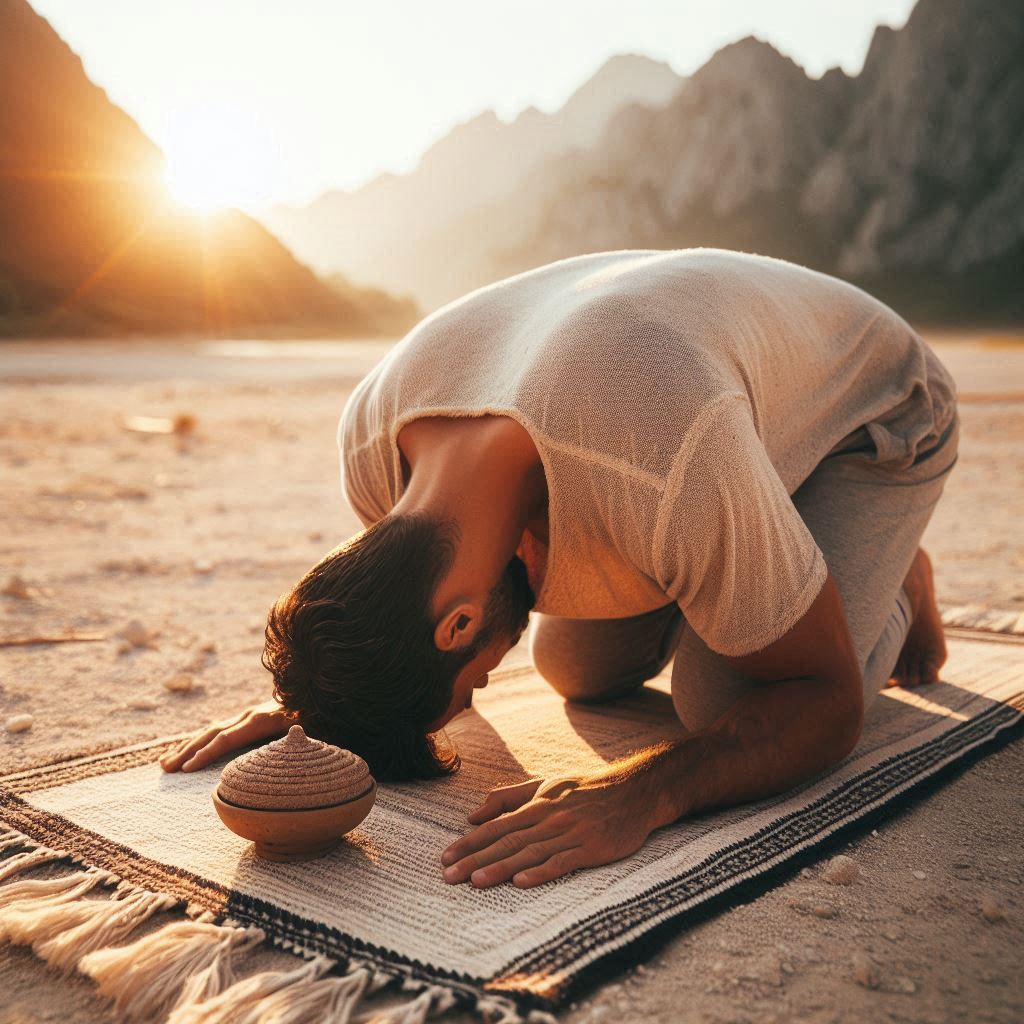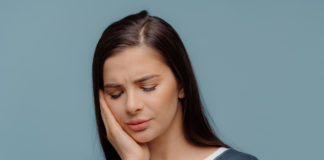Grounding Health Benefits & Shia Turbah: From Sacred Prostration to Sports Recovery
1) Why This Matters: A Bridge Between Faith, Physiology, and Fitness
Across religions and cultures, people kneel, bow, and place their foreheads to the ground — gestures of humility, surrender, and connection. In Islam, this geometry is codified in rukuʿ (bowing) and sujood (prostration). In Shia Islam specifically, believers place the forehead on a clay tablet called a turbah (mohr) so the head connects to pure earth rather than carpet or plastic. If modern grounding (earthing) research is even partly right, that small disc may double as a powerful wellness tool.
Preliminary studies and reviews propose that direct skin contact with the Earth — or a properly grounded surface — may reduce inflammation, improve sleep, modulate stress, and influence blood properties relevant to recovery and performance. While the field needs more large, rigorous trials, these early signals invite a pragmatic question: how do we safely integrate grounding into health, fitness, and sports — without losing spiritual depth? [1][3][4]
2) The “Seal of Religions”: How Traditions Touch the Earth
Prostration, kneeling, and head-to-ground gestures are strikingly universal:
- Islam (Sunni & Shia): In salah, seven body points touch in sujood: forehead (with nose), both hands, both knees, and toes; explicitly narrated in Sahih Muslim 490e. [6]
- Buddhism: Full or “five-point” prostrations with forehead, hands, knees, and feet on the floor are common in Tibetan/Mahayana practice. [12]
- Hinduism: Dandavat or five-limb salutations involve lying flat with the head to earth.
- Christian Orthodoxy/Coptic/Eastern rites: Head-to-floor prostrations occur in penitential seasons and veneration rites.
- Judaism (Temple era): Historic full prostration; modern practice retains bowing/kneeling on special days.
Among these, Islam’s precise geometry plus Shia insistence on earth-specific forehead contact yields a daily, measurable “grounding posture.”
3) Shia Turbah/Mohr: Theology, Symbolism, and Portable Earth
A turbah is a small, usually unglazed clay tablet used by Shia Muslims to ensure the forehead touches earth during prostration. Jurists and scholars emphasize that prostration should be on pure earth or what grows from it (not usually eaten or worn). The practice is not directed to the clay; it is worship of God on pure earth — a distinction Shia sources stress in response to misconceptions. [8][9]
Many prefer soil from Karbala — sacred to the memory of Imam Ḥusayn — but any pure earth is valid. The turbah also solves a modern problem: carpets (often synthetic) are insulating, so the turbah acts as a portable “earth node” that preserves direct skin-to-earth contact for the head even indoors. [8]
Hadith geometry: Seven bones of prostration are mandated (forehead/nose, hands, knees, toes). Shia jurisprudence ensures the forehead’s contact is with earth via the turbah; many Sunni rulings accept clean carpets/mats (valid worship), a material difference relevant to grounding. [6][7][8]
4) Grounding 101: The Science (Signals, Skepticism, and What’s Plausible)
Claims: Grounding (earthing) posits that skin contact with the Earth equalizes electrical potential and allows electrons to flow from Earth into the body, potentially neutralizing reactive species, modulating autonomic balance, and affecting blood rheology. Reviews in recent years summarize reductions in inflammation, pain, and stress, with improved sleep and HRV in small cohorts. [1]
- Blood & microcirculation: A 2-hour grounding protocol increased RBC zeta potential and reduced viscosity/clumping — changes that could aid oxygen delivery and recovery. [4]
- Sleep & stress: A recent randomized, double-blind study reported improvements in insomnia, daytime sleepiness, and stress with grounded mats; news coverage also notes sleep duration changes. [3][11]
- Integrative perspective: Reviews argue grounding may be an “anti-inflammatory remedy,” while calling for larger, more rigorous trials. [1]
Skepticism: Critics point out small sample sizes and potential placebo/nature-exposure confounds; balanced consumer summaries emphasize that evidence is early and mixed. Consider free outdoor grounding first. [10][17]
5) Bioelectric Primer: Why Grounding Might Matter to Athletes
Your body runs on voltages: cell membranes act like capacitors; ionic gradients drive nerve impulses and muscle contraction. If grounding reduces extraneous electrostatic load and stabilizes surface potentials, it could, in theory, sharpen neuromuscular signaling and autonomic balance — translating to calmer focus, better HRV, and smoother recovery windows.
The RBC findings are particularly relevant to training: higher zeta potential means RBCs repel one another more, flow more freely, and carry oxygen with less resistance, potentially easing cardiovascular strain in high-volume work. The 2013 open-access trial documented those rheology shifts after two hours of grounding. [4]
6) Faith Moves the Body: Postures that Double as Mobility & Recovery
Many worship postures mirror mobility/yoga shapes:
| Prayer/Tradition | Movement Analog | Fitness Benefit |
|---|---|---|
| Rukuʿ (bowing) | Hamstring & spinal flexion | Posterior chain mobility; spinal decompression |
| Sujood (prostration) | Child’s pose (yoga) | Parasympathetic downshift; diaphragmatic breathing |
| Sitting in tashahhud | Seiza/Zen kneel | Hip/ankle flexibility; posture awareness |
| Forehead on turbah | Head-grounding pause | Potential EEG calm; mental reset |
Layer in barefoot contact (feet, hands, knees) before the forehead-to-earth touch and you’ve built a simple, free neuromuscular and grounding circuit.
7) How We Became “Ungrounded”: Shoes, Floors, and Synthetic Living
Rubber-soled shoes, sealed floors, synthetic clothing, and 24/7 electronics isolate us from the planet’s surface. We spend years without meaningful bare-skin contact with soil or stone. Reintroducing small, safe grounding windows during training and prayer is a realistic hedge against that lifestyle drift.
8) Why Foam Yoga Mats and Polyester Can Work Against Grounding
Most common yoga/gym mats are EVA, PVC, rubber, or TPE blends — polymers engineered as electrical insulators (high resistivity). Excellent for cushioning; poor for conduction. Unless specifically engineered with conductive fillers (carbon, metal fibers) and a proper earth connection, these mats block earthing. [13][15]
- EVA foam is widely used because it’s non-conductive and insulative; conductive variants require special formulations. [13][14]
- Polyester/nylon apparel are classic insulators and prone to static; conductivity typically needs carbon/silver fibers or antistatic finishes. [16]
- Marketing pages comparing PVC/TPE/EVA rarely discuss electrical properties; eco/texture ≠ conduction. Choose purpose-built conductive mats if grounding indoors. [18]
Actionable: For earthing sessions, skip standard foam. Use bare soil/stone, or a verified conductive mat that connects safely to Earth potential.
9) Preparation Rituals: A Safe, Practical Earthing Routine
- Choose surface: moist grass, clean soil, sand, or unsealed stone. Indoors, consider a certified conductive mat or sheet (different from normal foam). [18]
- Expose skin: barefoot to start; add palms/knees. For forehead grounding, remove hats and oils in the contact zone.
- Hydrate interface: slight moisture reduces resistance (a light mist is fine).
- Sequence habit: stand barefoot (2–3 min) → kneel with palms down (2–3) → 60–120 s forehead to turbah/earth with slow nasal breathing.
- Timing: 10–20 min post-workout; 15–30 min pre-sleep. Track HRV/sleep as your feedback loop. [3]
- Clothing: natural fibers near contact points; avoid thick synthetics that trap static. [16]
- Hygiene: keep the turbah clean/dry; unglazed is best for contact; replace if cracked or contaminated. [8]
10) Fitness Mapping: Practical Use Cases for Grounded Athletes
| Need | Why Grounding Helps | Protocol |
|---|---|---|
| Reduce DOMS | Inflammation down-shift; improved microcirculation and RBC behavior. [4] | Post-lift: 8–12 min barefoot on soil; add 60–90 s forehead-to-turbah breathing. |
| Sleep better | DB-RCT showed improvements in insomnia metrics with grounded mats. [3] | Evening: 15–30 min grounded breathwork; consider conductive bedding tested for safety. [18] |
| Calmer pre-competition | Autonomic balance and HRV may benefit from grounding (preliminary). [1] | 2–3 min barefoot + 60 s forehead touch; 4-7-8 breathing; gratitude prompt. |
| Low-cost recovery | Outdoors is free; religious ritual provides built-in frequency/adherence. | Integrate with daily prayers or cooldown. Use natural surfaces when possible. |
11) New Trends: Conductive Mats, EMF Hygiene, and “Grounded Gyms”
- Conductive recovery mats/sheets: Carbon/silver-threaded pads tied to Earth (with resistors) — distinct from standard foam. Quality varies; read specs and safety notes. [18]
- Athlete protocols: HRV-guided cooldowns that combine breathwork and grounding are being piloted in recovery settings. [1]
- Public interest: Mainstream outlets cover new mat studies and trends; results vary by metric (duration vs. sleep quality components). [11]
12) Respectful Comparison: Why Shia Turbah May Be More “Grounding-Optimized”
Both Sunni and Shia schools value prostration. Many Sunni rulings validate prayer on clean carpets/mats; Shia jurisprudence prefers the forehead on pure earth, producing consistent clay contact even in carpeted spaces. If grounding confers physiological benefits, Shia practice is materially aligned to maximize them — especially the forehead node closest to the brain. [7][8]
13) Brief Timeline: Humanity’s Long Dance with the Earth
- Antiquity: Barefoot priests, sand training, stone floors — constant earth contact.
- Monastic eras: Ascetics sleeping on ground; humility rituals with soil.
- Industrial age: Rubber, sealed buildings, synthetics → mass insulation.
- 1990s–Today: “Earthing” coined; pilot trials; conductive devices; athlete recovery protocols; Shia turbah remains a daily earth interface.
14) Safety, Caveats, and Respect
- Evidence status: Encouraging but mixed; more large, blinded, independent trials needed. [10]
- Hygiene: Avoid contaminated soil. Keep turbahs clean/dry.
- Electrical safety: Only use verified conductive products with proper resistors; don’t DIY mains grounding.
- Spiritual integrity: Prayer is worship, not a “biohack.” Health framing should honor intention and tradition. [8]
15) EDML Research Proposal: The Grounded Athlete Initiative
To move beyond debate, EDML proposes a simple pilot:
- Participants: 20 active adults (including practicing Shia and non-Shia athletes).
- Design: 2-week baseline; 2-week intervention. Randomize to (A) outdoor barefoot + forehead-to-turbah routine vs. (B) identical routine on foam mat (sham). Cross-over after washout.
- Measures: HRV, sleep duration/stages (wearables), morning readiness, evening stress; optional microcirculation tests.
- Analysis: Compare deltas; publish preprint; collaborate with university electrophysiology or sports-medicine labs.
16) Internal Links: Keep Learning with Exercise Daily
References
- Sinatra ST, Oschman JL, Chevalier G, et al. Open-access review: Grounding – The universal anti-inflammatory remedy.
- PubMed record of the same review: 36528336.
- Park HJ, et al. Randomized, double-blind study on earthing mats (stress/insomnia/daytime sleepiness): ScienceDirect.
- Chevalier G, et al. Earthing reduces blood viscosity; increases RBC zeta potential: open-access. PubMed: 22757749.
- Sahih Muslim 490e (seven bones of prostration): sunnah.com/muslim:490e.
- IslamQA: prostrating on seven parts: islamqa.info/en/answers/33761.
- al-Islam.org explainer: Why do the Shi‘ah prostrate on Turbah?
- al-Islam.org media: Prostration On Earth — Do the Shia Worship Turbas?
- Healthline overview on grounding (balanced summary): healthline.com/health/grounding.
- Neuroscience News coverage of mat research: neurosciencenews.com/grounding-sleep.
- Buddhist prostration background: Wikipedia.
- EVA foam non-conductive explainers: Is EVA foam conductive? and Does EVA foam conduct electricity?
- EVA properties (generally insulating; conductive variants are special): Parkway Foam.
- Anti-static/conductive textiles background (polyester needs additives): PolyesterMFG and Specialty Fabrics Review.
- Consumer skepticism / mat review perspective: scottjeffrey.com.
- Grounding sheets overview (indoor conduction basics): Sleep Foundation.
Disclaimer: Informational purposes only. Not medical advice. Consult your clinician before changing training or spiritual routines.




